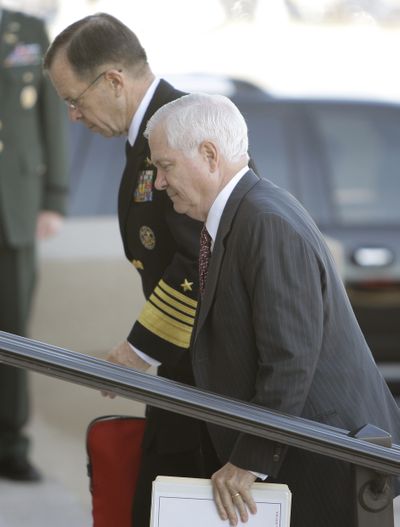Obama to focus on al-Qaida
Shift from Taliban will allow concentration of military assets

WASHINGTON – Nearing the end of a lengthy war review, President Barack Obama and his top advisers are moving toward a strategy in Afghanistan that defines al-Qaida as a greater threat to U.S. security than the Taliban, a view that could avoid the major troop increase sought by military commanders.
The strategy represents a subtle shift for an administration that has always considered al-Qaida its top enemy, while viewing the Taliban as closely allied and supportive of its extremist ambitions. White House officials now are taking pains to decouple the two groups.
“The distinction between the Taliban and al-Qaida is a critical one for the American people to understand if they want to understand our policy in the context of protecting our homeland,” a senior administration official said in an e-mail exchange.
Such an approach also would let U.S.-led forces concentrate on a part of the war where they have had the most success recently, using unmanned aircraft attacks and missile strikes on al-Qaida operatives and outposts in the remote region along the Pakistan-Afghanistan border.
Obama meets today with top national security advisers as part of the review, and officials said he is at least a week away from any decisions on the new U.S. policy or troop levels. The top U.S. commander has recommended up to 40,000 additional American troops, in addition to the 68,000 already there.
Top administration officials have expressed skepticism about sending so many extra troops without a close examination of U.S. aims. They also have become wary as extremist violence continues unabated, Afghanistan wrestles with the aftermath of an election marred by fraud, and support for the war plummets among Americans and many U.S. lawmakers.
By emphasizing the danger of al-Qaida, many interpreted the direction of the strategy outlined in comments by the senior official and White House staffers as a narrower approach, focused more on attacking violent extremists than on painstakingly remaking civil order throughout Afghanistan.
The direction of the strategy discussion also rekindled an eight-year-old debate about how closely al-Qaida and the Taliban are aligned. Many experts view the two groups as virtually interchangeable sets of violent militants, while others see the Taliban as more of a local movement.
Aides stress that Obama has not reached conclusions about the strategy review or troop levels. “The president has always evaluated our policy,” White House spokesman Robert Gibbs said Thursday, “based on those that pose a direct threat to attack our homeland or to attack our allies. Included in that group are any that would provide safe haven for those activities.” At the same time, Gibbs said that al-Qaida and the Taliban are “not the same type of group.”